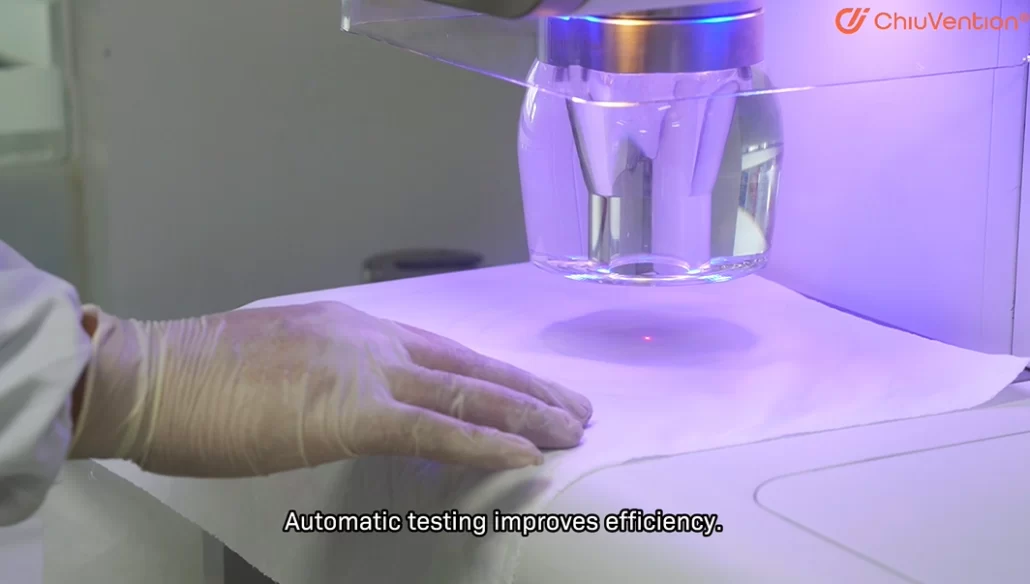Fabric bursting strength testing is of great importace for our daily outfit. We often notice that the elbows of sweaters easily deform, the knees of knitted pants are the first to wear out, and socks frequently develop holes in the toe area. Consumers may wonder: Is this a quality issue or an inherent characteristic of the fabric? In reality, these issues are fundamentally about fabric durability. Strength testing is a crucial mechanical performance assessment for textiles, determining their durability. Currently, China widely uses burst strength or Top-burst burst strength testing to evaluate the strength of knitted fabrics and nonwoven fabrics. But how are these tests conducted? What products are they for? What are the testing procedures and personnel requirements? This article delves into the differences between these tests, their testing principles, standards, influencing factors, and testing instruments, helping manufacturers choose the best method for quality control.
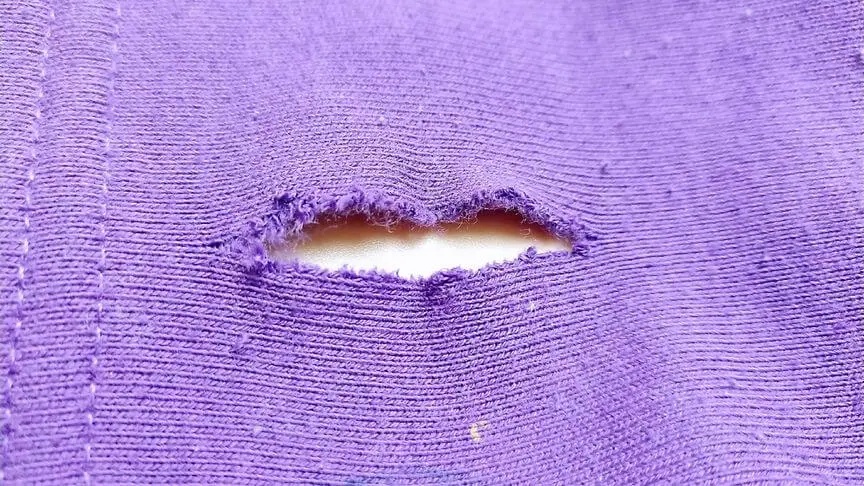
Principles and Standards of Burst and Top-burst Burst Strength Testing
What are the principles of textile bursting strength and Top-burst bursting strength tests? What are the testing methods and corresponding standards at home and abroad?
The principle of the Top-burst bursting strength test is to clamp the test specimen in a circular specimen holder on a fixed base. A spherical plunger then moves vertically towards the specimen at a constant speed, deforming the specimen until it ruptures, and the Top-burst bursting strength is measured. The principle of the bursting strength test is to clamp the specimen on an extensible diaphragm. Liquid pressure is applied beneath the diaphragm, and the liquid volume is increased at a constant speed, causing the diaphragm and the specimen to expand until the specimen ruptures. At this point, the bursting strength and bursting expansion degree are measured.
International and Domestic Testing Standards
There are mainly 3 commonly used domestic and international testing standards for Top-burst bursting strength: GB/T 19976—2005 Textiles—Determination of bursting strength—Steel Top-burst method; ISO 3303—1:2012 Rubber – or plastics – coated fabrics—Determination of bursting strength—Part 1: Steel Top-burst method; and Article 5.4.1 of GB/T 8878—2002 Cotton Knitted Underwear.
The commonly used domestic and international standards for bursting strength tests mainly include:
- GB/T 7742.1—2005 Textiles—Bursting properties of fabrics—Part 1: Determination of bursting strength and bursting expansion degree—Hydraulic method
- GB/T 7742.2—2015 Textiles—Bursting properties of fabrics—Part 2: Determination of bursting strength and bursting expansion degree—Pneumatic method
- ASTM D3786/D3786M—2018 Test Method for Bursting Strength of Textiles—Diaphragm Method
- ISO 13938—1:2019 Textiles—Bursting properties of fabrics—Part 1: Determination of bursting strength and bursting expansion degree—Hydraulic method
- ISO 13938—2:2019 Textiles—Bursting properties of fabrics—Part 2: Determination of bursting strength and bursting expansion degree—Pneumatic method
Comparison Between Burst Strength and Top-burst Burst Strength Testing
What are the similarities and differences between bursting strength and Top-burst bursting strength tests?
The common principle of these two assessment indicators is to apply a circular stress in the vertical direction to a flat – placed fabric at a certain speed, deforming the fabric and causing it to burst. The main difference is that for the Top-burst bursting strength test, a spherical plunger directly acts vertically on the fabric to cause bursting, while for the bursting strength test, air pressure or hydraulic pressure is used to push the diaphragm to expand, deforming the fabric in contact with it and generating a bursting effect. The unit of the Top-burst bursting strength value is Newton (N), and the unit of the bursting strength value is kPa.
Regarding bursting strength standards, one difference between Chinese standards and the American ASTM standard is that Chinese standards clearly specify the medium, dividing gas and liquid media into two standards, while the American ASTM standard includes both gas and liquid. Another difference is that the Chinese national standard only requires testing 5 points, while the American standard requires testing 10 points.
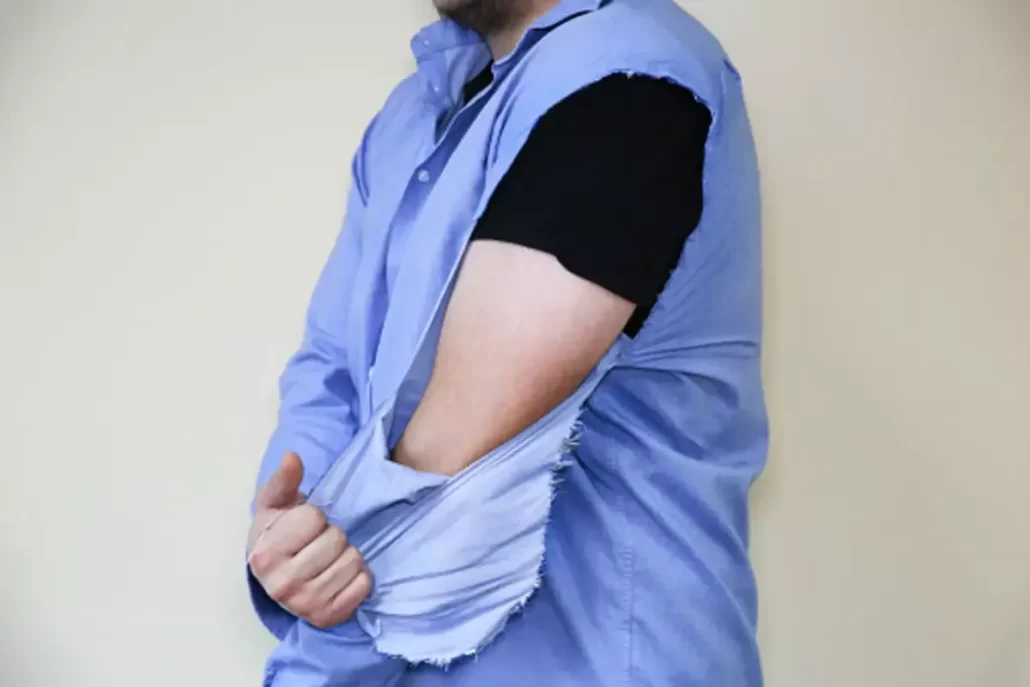
What Quality Issues Can These Tests Identify?
These indicator performance tests can help enterprises and consumers understand the damage – resistance performance of products, especially for knitted products and some non – woven fabrics. Although analyzing product damage down to the single-yarn performance is more microscopic and detailed, it is a cumbersome process to unwind the coils and loosen the yarns to observe the single-yarn for each product. Moreover, knitted fabrics generally have better tensile and extensibility than woven fabrics, and the knitted coil structure also affects consumer use. Therefore, it is not sufficient to judge product performance only based on the single – yarn situation. Directly using the top-burst bursting or bursting strength test to simulate the deformation of knitted products caused by the elbows, knees, toes, etc. and measure the bursting force is an intuitive and effective testing method.
Challenges and Key Considerations in Burst Strength Testing
Burst strength testing requires strict adherence to testing protocols to ensure accurate and reliable results. Several factors must be carefully managed to minimize errors and inconsistencies.
Proper Sample Preparation
- The test specimen must be representative of the fabric batch.
- The test area should be free from folds, creases, or fabric edge effects to avoid skewed results.
Correct Sample Orientation
- The front and back sides of the fabric must be correctly identified.
- Since fabric is worn with the front side facing outward, the bursting strength test must be conducted with the back side facing the diaphragm to simulate real-life conditions.
- The specimen must also be properly conditioned per standard testing protocols.
Bursting Time Control
- A preliminary test is conducted to regulate the flow rate and ensure consistent bursting times.
- The instrument automatically adjusts the flow rate in subsequent tests to maintain a bursting time within (20 ± 5) seconds.
- If a specimen bursts outside this range, it must be discarded and retested.
- If multiple specimens fail within this range, potential instrument malfunctions (e.g., oil leakage or a loose test cover) should be checked immediately.
Understanding Standardized Testing Parameters
- Critical testing parameters such as test speed, plunger diameter, circular ring inner diameter (test area), and the number of specimens must be carefully followed.
- Some standards have predefined regulations, while others require customized agreements based on specific fabric types.
- Different test areas and plunger diameters significantly affect the results.
- Sock standard (FZ/T 73037—2019): Requires a 20 mm steel plunger.
- Knitted shoe upper standard (FZ/T 73060—2017): Requires a 25 mm steel plunger.
- General knitted fabric standard: Uses a 38 mm plunger.
- Smaller plungers are more suitable for footwear-related textiles, as they better reflect real-world stress conditions.
By meticulously following these precautions and accurately recording key parameters in test reports, manufacturers can ensure high reliability and reproducibility in fabric burst strength testing.

Factors Affecting Burst and Top-burst Burst Strength
(1) The breaking strength and elongation at break of yarns
When the breaking strength and elongation of yarns in the fabric are high and the bending stiffness is high, the yarns are not easily bent and broken, which is beneficial to the Top-burst bursting strength and bursting strength of the fabric.
(2) Fabric thickness
Under the same other conditions, the thicker the fabric, the greater the Top-burst bursting strength and bursting strength.
(3) Fabric warp and weft density
When other conditions are the same and the fabric warp and weft densities are different, the fabric will tear in the direction of the lower density when it bursts, and the Top-burst bursting strength of the fabric is low, with the tear showing a straight – line shape. When the warp and weft densities are similar, the yarns in the warp and weft systems can simultaneously play the maximum role in sharing the load, and the fabric will crack in both the warp and weft directions at the same time, with the tear showing an L – shaped appearance.
(4) The loop strength of yarns
In knitted fabrics, when the loop strength of the yarn coils is high, the Top-burst bursting strength and bursting strength of the fabric are high.

Common Testing Methods
Hydraulic Burst Strength Testing: Principles and Equipment
The hydraulic method for burst strength testing involves clamping a test specimen on an extensible diaphragm and applying liquid pressure beneath it. As the liquid volume increases at a constant speed, both the diaphragm and fabric expand until rupture occurs. The bursting strength and expansion degree are then measured.
Common hydraulic burst strength machines include the Mullen C-type and Mullen A-type testers. Both utilize glycerin liquid pressure and an elastic membrane to create the bursting effect. The key difference lies in their measurement ranges:
- Mullen C-type: 2–200 PSI
- Mullen A-type: 10–500 PSI
To prevent excessive pressure that may damage the membrane, only 15%–75% of the full scale can be used in testing. If a fabric cannot be burst on the Mullen C-type, it should be tested on the Mullen A-type, which accommodates higher elasticity fabrics.
Hydraulic Burst Strength Testing Standards
- ASTM D3786 (U.S. standard) – PSI
- ISO 13938-1 (European standard) – kPa
This method ensures precise pressure control and is ideal for high-strength textiles and laboratory applications requiring accurate burst strength analysis.
Pneumatic Burst Strength Testing: Principles and Applications
The pneumatic method is another widely used approach for burst strength testing, particularly suited for textiles, films, and other flexible materials. This method utilizes compressed air to apply pressure until the fabric bursts, providing insights into its durability and resistance to external forces.
Testing Principle
- A fabric specimen is clamped onto an extensible diaphragm.
- Gas pressure is applied beneath the diaphragm, and the air volume increases at a constant rate.
- As the diaphragm and fabric expand, the specimen continues to stretch until it ruptures.
- The bursting strength and expansion degree are measured at the point of failure.
Equipment and Testing Standards
One of the most commonly used pneumatic burst testers is the Truburst Pneumatic Bursting Strength Tester, which operates with an air pump system and consists of three main components:
- Air pump – Generates the required gas pressure.
- Tester – Houses the test cup, elastic membrane, and safety cover.
- Printer – Records and prints test results for analysis.
There are two standard test cup sizes:
- Large cup: 50 cm² area, 70.50 mm displacement, test time: 20 ± 5 seconds.
- Small cup: 7.3 cm² area, 22.50 mm displacement, test time: 20 ± 5 seconds.
Standard Testing Methods
- ASTM D3786 (American Standard) – Measured in PSI.
- ISO 13938-2 (European Standard) – Measured in kPa.
The pneumatic method is particularly advantageous for high-speed, non-destructive testing and is widely used in quality control processes for bulk textile production.
Steel Ball Burst Strength Testing: Principles and Standards
The steel ball method is a widely used test for measuring fabric bursting strength, especially in knitted and nonwoven textiles. This method assesses fabric durability by applying a controlled force using a spherical plunger until the fabric ruptures.
Testing Principle
- A fabric specimen is clamped in a circular holder on a fixed base.
- A spherical plunger moves vertically toward the specimen at a constant speed.
- As the specimen deforms and ultimately ruptures, the bursting strength is recorded.
Testing Standards and Equipment
One of the most commonly used fabric strength testers for the steel ball method is the ChiuVention SmartPull Tensile Strength Machine, which utilizes a steel ball to simulate bursting force. The test follows both American and Chinese standards:
- ASTM D3787 & ASTM D6797 (U.S. Standards)
- Unit: Pounds (LBF)
- Bursting speed: 12 inches/min
- Plunger diameter: 25 mm
- GB/T (Chinese National Standard)
- Unit: Newton (N)
- Bursting speed: 100 mm/min
- Plunger diameter: 20 mm
Sampling Requirements
- A minimum of five circular specimens should be tested.
- Each specimen must be ≥100 cm² in area.
- The test area must be free from folds and creases and away from fabric edges.
- It is recommended to sample diagonally for more representative results.
By following standardized steel ball burst strength testing protocols, manufacturers can accurately assess fabric resistance to localized stress, ensuring product quality and durability.
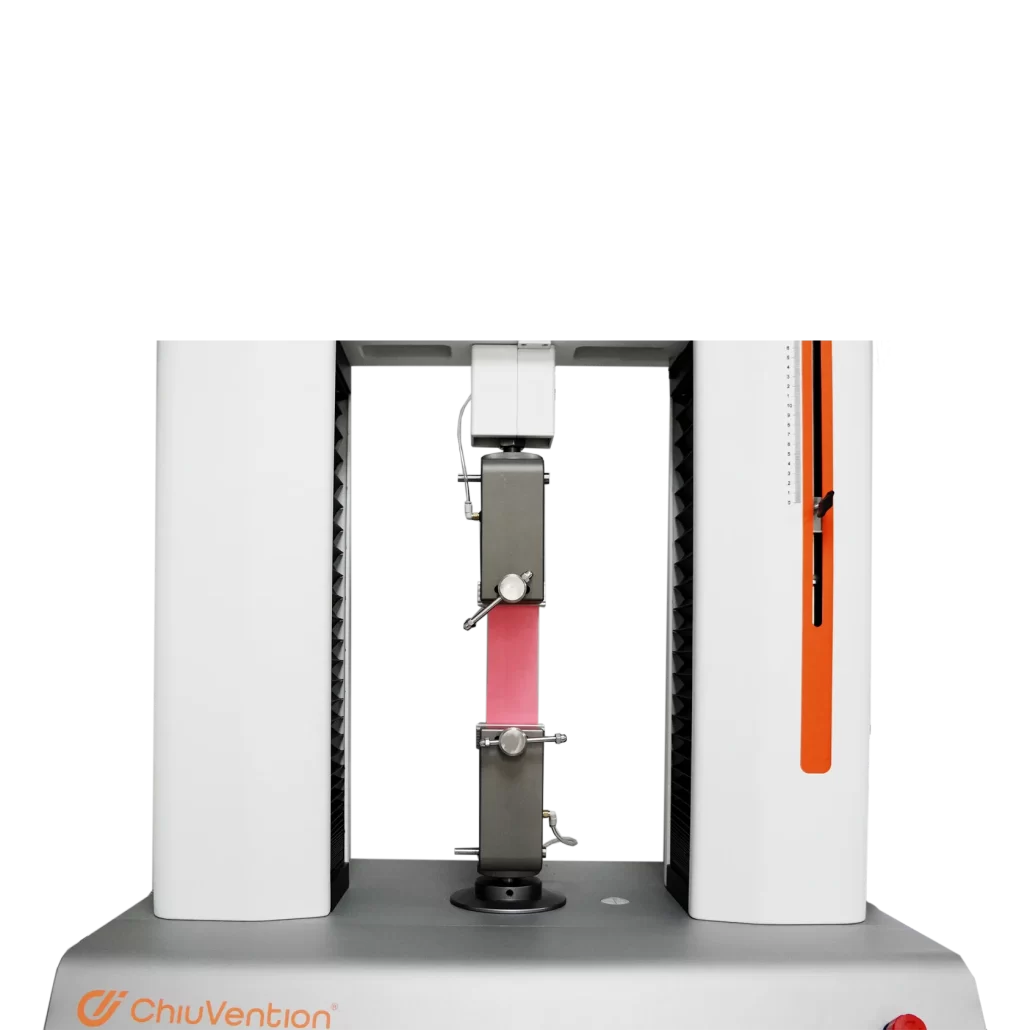
Key Differences Between Hydraulic and Pneumatic Burst Testers
The testing of fabric bursting strength is mainly divided into the hydraulic method and the pneumatic method, and the devices used are the fabric hydraulic bursting strength tester and the fabric pneumatic bursting strength tester respectively. There are significant differences between hydraulic and pneumatic bursting strength testers in working principle, application scenarios, performance characteristics, and operation methods.
The hydraulic bursting strength tester applies pressure using a liquid (such as water or oil) to burst the sample. Its pressure control is precise and stable, making it suitable for various textile products, thin – film materials, and environments that require high – precision measurements. It is widely used in laboratories and quality inspection institutions. The pneumatic bursting strength tester applies pressure through gas (such as air). Since the gas pressure can be adjusted quickly, it is suitable for rapid detection of a large number of samples, such as quality control on the production line. In addition, the pneumatic bursting strength tester uses air as the medium, which is pollution – free and meets environmental protection requirements.
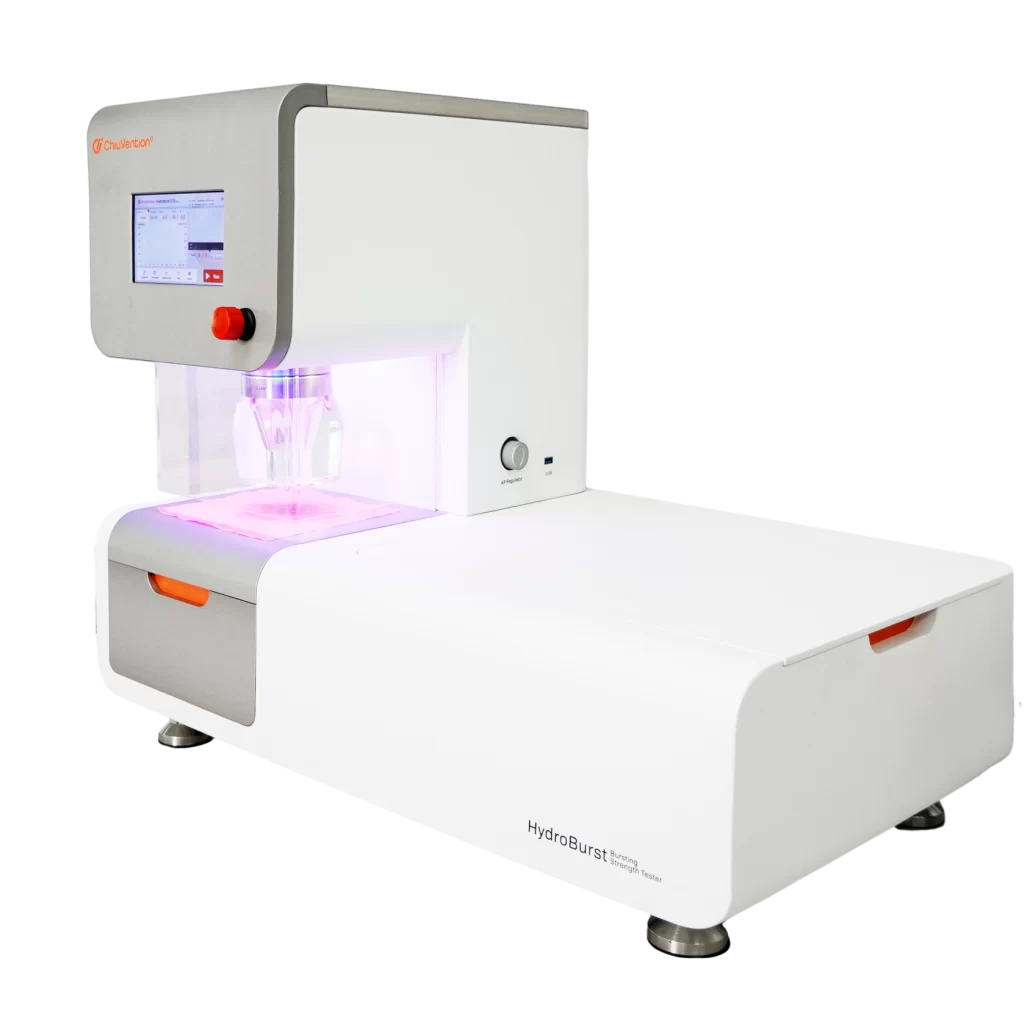
In terms of performance, the hydraulic bursting strength tester provides more stable and accurate pressure, suitable for high – precision testing requirements. However, its operation is relatively complex, and the maintenance cost is also high. In contrast, the pneumatic bursting strength tester is easy to operate and maintain, and the equipment is usually more portable, making it suitable for on – site rapid testing.
The hydraulic bursting strength tester is suitable for tests that require high precision and high stability. The pneumatic bursting strength tester is more suitable for rapid testing and occasions with high environmental protection requirements.
Selecting the appropriate bursting strength tester according to specific testing requirements and application scenarios can better ensure the accuracy and reliability of the test results.
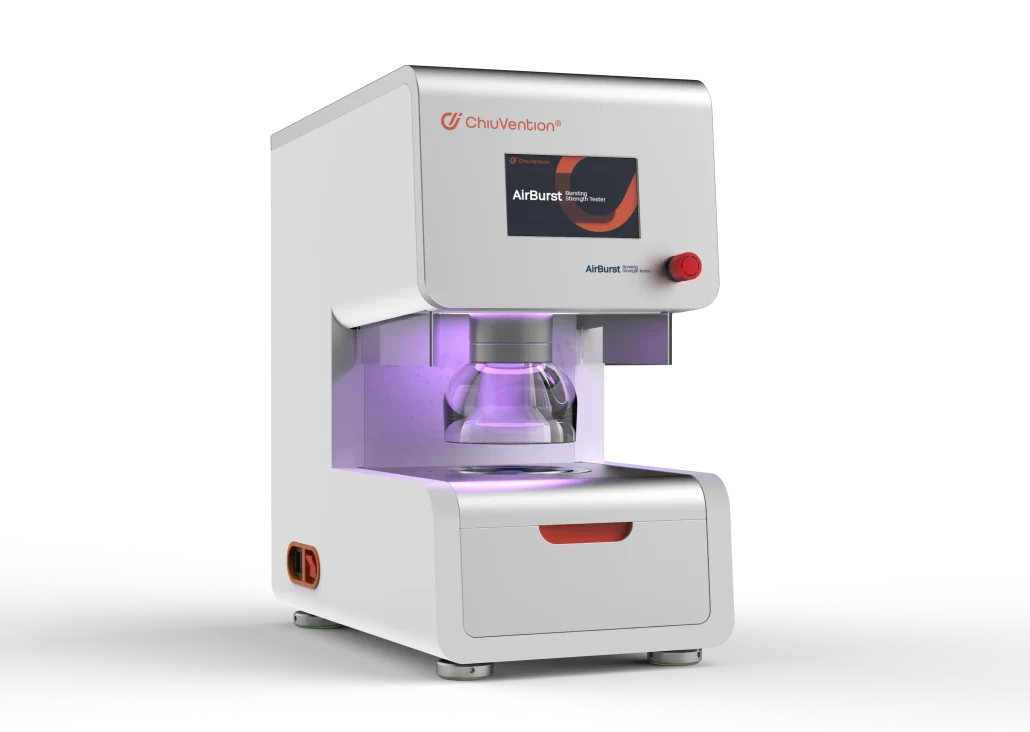
How to choose the right bursting strength tester?
Define Testing Needs
First, it is necessary to clearly define the specific application scenario and requirements of the test, including the type of materials to be tested (such as textiles, thin films, etc.), the testing frequency (laboratory, production line, or on – site), the mechanical property indicators to be tested (tear strength, breaking strength, etc.), and the requirements for testing accuracy and stability.
Testing accuracy and stability
Select the appropriate testing instrument according to the testing accuracy requirements. Hydraulic bursting strength testers usually can provide higher pressure accuracy and stability, which is suitable for occasions with strict requirements for test results accuracy. Although pneumatic bursting strength testers are easy to operate, their pressure stability is relatively low, which is suitable for on – site and rapid tests where the accuracy requirements are not so strict. When the pressure does not exceed 80 kPa, there is no significant difference in the bursting strength results obtained by using hydraulic and pneumatic bursting strength testers. For special textiles that require higher bursting pressures, the hydraulic tester is more applicable.
Equipment operation and maintenance
Hydraulic systems usually require professional operation and maintenance, while pneumatic systems are relatively simple and suitable for use by non – professional operators. At the same time, also consider the durability and failure rate of the equipment, and choose equipment with reliable quality and lower maintenance costs.
Automation and data processing capabilities of the test
Bursting strength testing instruments are usually equipped with data – acquisition and processing systems that can record and analyze test data in real – time and provide detailed test reports. You can choose intelligent instruments with automated control and data – management functions according to your needs to improve testing efficiency.
Consider the budget and cost
Hydraulic systems usually have a higher price but can provide higher testing accuracy and stability; pneumatic systems have a relatively lower price and are suitable for users with limited budgets.
ChiuVention Burst Testing Instruments
The AirBurst pneumatic bursting strength tester is suitable for strength tests of common textiles, thin films, paper, foam plastics, and other materials. It has a simple structure and is more convenient for operation and maintenance.
The HydroBurst hydraulic bursting strength tester is suitable for tests that require higher pressure and a more stable pressure environment, such as high – strength textiles and leather.
Both of the above – mentioned devices can be connected to the SmarTexLab app installed on mobile phones via WIFI. Parameters can be set on the mobile – phone side, and the test status can be monitored. Users can also receive device warning reminders and consumable replenishment reminders, and can share the device test status with one click.
Understanding the differences between bursting strength and Top-burst bursting strength testing is essential for textile manufacturers and quality control experts. Whether using hydraulic burst testers for high-precision lab testing or pneumatic burst testers for fast, on-site evaluations, selecting the right method ensures accurate durability assessments. By implementing standardized burst testing methods, textile companies can improve product reliability, enhance consumer satisfaction, and maintain competitive market standards.
For more information on smart textile testing instruments, or to obtain professional testing solutions, please contact us!
Email: sales@chivention.com
WhatsApp: +86 180 2511 4082
Linkedin: Chiuvention
